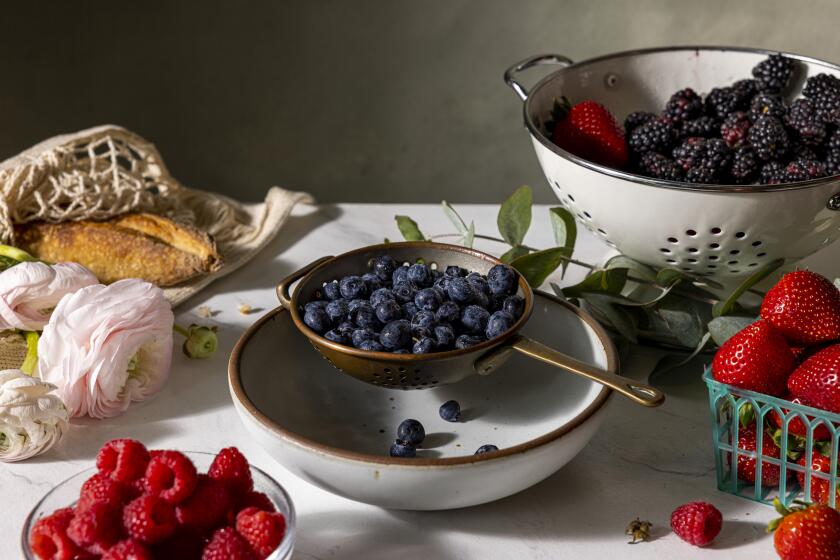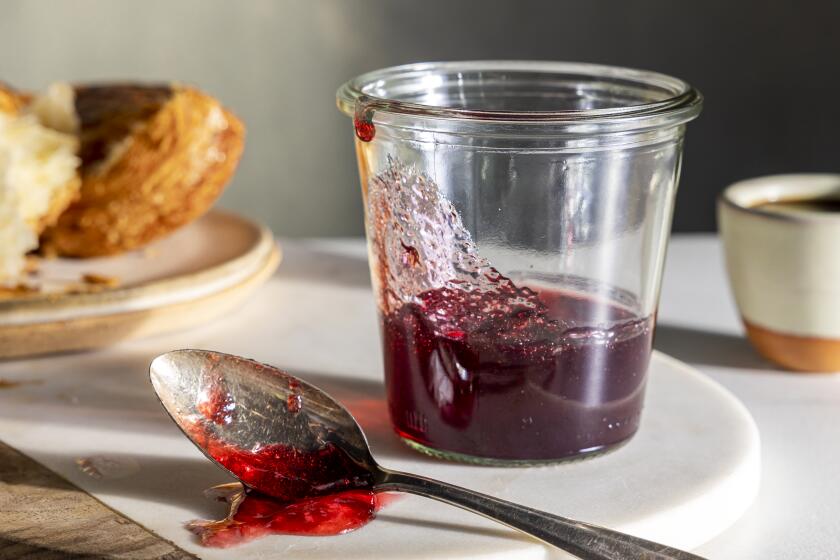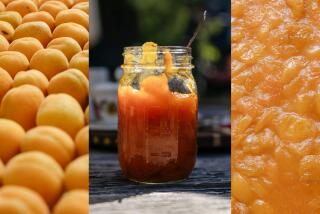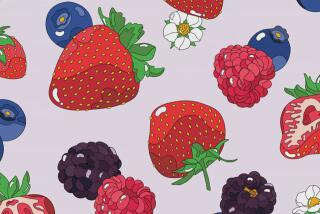You can make your own â not powdered â pectin at home
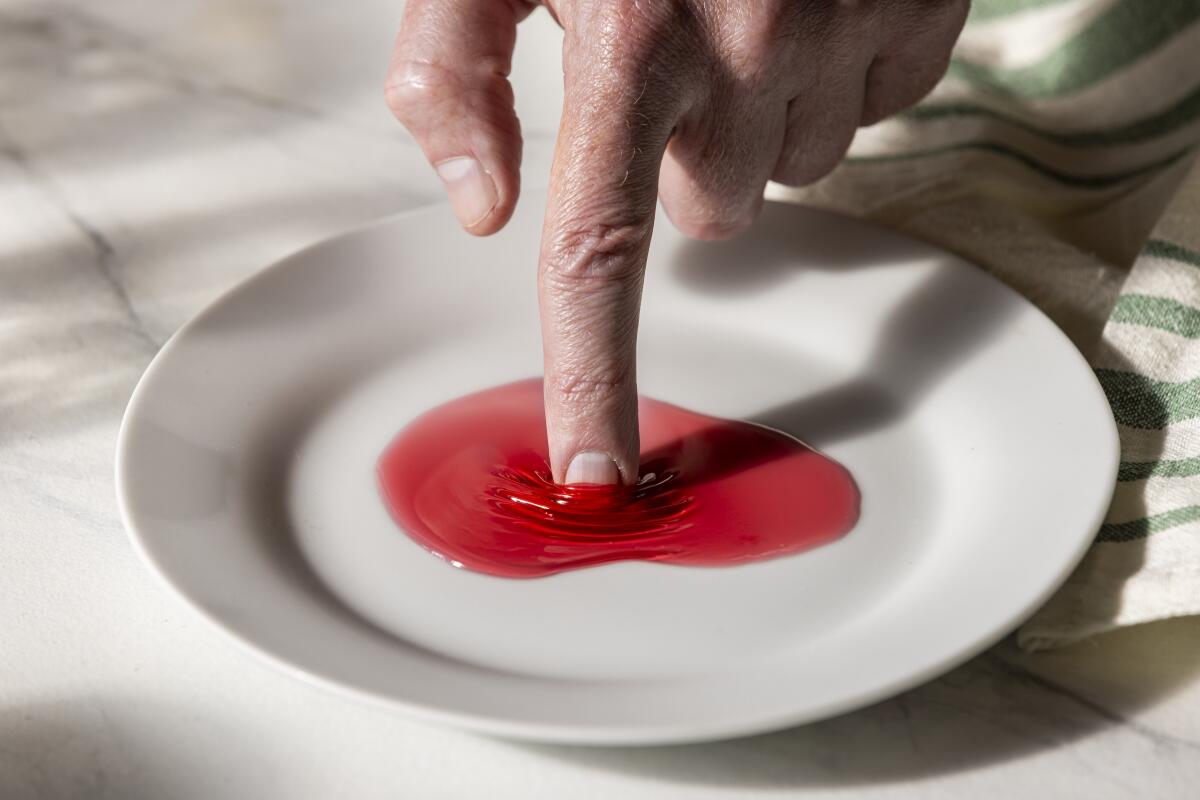
How to find pectin in your fruit and use it to give your jellies the proper set.
This story is a component of the feature âSeasons of Preserves: Berry Jelly,â which is part of a four-part series on preserving fruit at home called âL.A. in a Jar.â
As RuPaul sings in the 2012 song âPeanut Butter,â âIt must be jelly âcause jam donât shake.â That shake, at least in fruit preserves, refers to pectin.
Similar to gelatin or carrageenan, which are derived from animals and seaweed, respectively, pectin is the substance in the cell walls of many fruits that gives them rigidity; in other words, their bones. This substance leaches out of fruits when cooked and is what allows the liquid theyâre cooked in to magically set into a wobbly gel.
Certain fruits contain a lot of pectin â green apples, lemons, cranberries, plums â while others are very low in it, like blueberries, cherries or pears. When making jam or fruit butter, the presence of pectin is not necessarily going to make or break the final product because mushed, mashed or pureed fruit provides the finished jam or butter the majority of its body and thickness. But when making marmalade or jellies, the entire point is to get a final preserve that has the proper balance of pectin and sugar to achieve a delightfully wobbly but still scoopable â and spreadable â texture. When using fruits that are low in pectin, itâs great to add fruits that are high in it into the mix so that you can find that proper balance, like in Blackberry Jelly With Amaro.
Many fruit preservers use powdered pectin, which is analogous to powdered animal gelatin in that itâs pure and need only be dissolved in liquid to set your fruit juice into a jelly. But because the pastime of making jelly is a craft worth doing the original way, I like to use green apples or orange peels â as do most from-scratch preservers â to provide the necessary pectin to any jelly or marmalade, respectively.
This involves boiling the apples or orange peels in water for hours until every last bit of pectin is retrieved from their cell walls. Once the resulting liquid is drained and cooled, you have what many preservers call âpectin stock,â which you can then add to fruits that need it for making certain jams, jellies and marmalades.
To do this, combine equal parts by weight of tart green apples, such as Granny Smith, and filtered water. First, chop the apples â skin, seeds, cores and all because thatâs where most of the pectin lives â into rough, 1-inch chunks. Then combine them in a large pot with the water. Bring the water to a boil and reduce the heat to maintain a steady simmer. Cover the pot and let the apples cook until they completely fall apart to mush, anywhere from 30 to 90 minutes, depending on the apples and how vigorously they were boiling.
Immediately remove the pot from the heat and pour the apples and water into a large sieve set over a bowl and let them drain overnight, or until the apple mush is completely cooled. Discard the apples and scrape any pectin that may be on the underside of the sieve into the liquid. Dip your finger in the cooled liquid, then rub it between your finger and thumb. It should feel oily, viscous and slick. Pour the pectin stock into airtight storage containers and store in the refrigerator for up to two weeks and in the freezer for up to a year.
When you need to use it, mix equal parts by weight of the pectin stock with fruit juice for making jelly. If making jam, use ½ part pectin stock for every 1 part strawberries, cherries or other low-pectin chopped fruit that needs a little help to set.
Read more:
The steps that ensure your berry jelly is a success.
Blackberry Jelly With Amaro
More to Read
Eat your way across L.A.
Get our weekly Tasting Notes newsletter for reviews, news and more.
You may occasionally receive promotional content from the Los Angeles Times.
